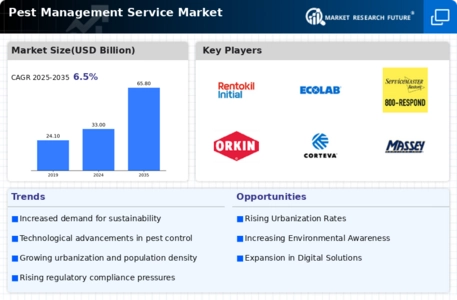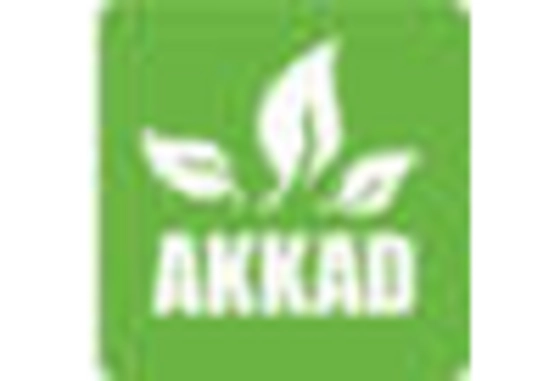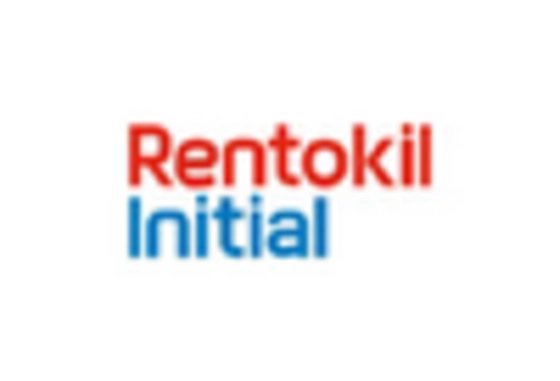Rising Urbanization
The Pest Management Service Market appears to be significantly influenced by the ongoing trend of urbanization. As populations migrate towards urban centers, the density of human habitation increases, leading to a higher likelihood of pest infestations. This urban growth creates a pressing demand for effective pest management solutions. According to recent estimates, urban areas are expected to house approximately 68 percent of the world's population by 2050, which could potentially escalate the need for pest control services. Consequently, pest management companies are likely to expand their offerings to cater to this burgeoning market, thereby driving growth in the Pest Management Service Market.
Increased Awareness of Health Risks
The Pest Management Service Market is also experiencing growth due to heightened awareness regarding health risks associated with pest infestations. Pests such as rodents and insects are known carriers of various diseases, which can pose serious health threats to humans. As public awareness campaigns and educational initiatives proliferate, consumers are becoming more proactive in seeking pest management services to mitigate these risks. This trend is reflected in market data, which indicates that the pest control services sector is projected to grow at a compound annual growth rate of around 5.5 percent over the next several years. This increasing vigilance regarding health and hygiene is likely to bolster the Pest Management Service Market.
Regulatory Compliance and Standards
The Pest Management Service Market is significantly impacted by regulatory compliance and standards that govern pest control practices. Governments and health organizations are increasingly implementing stringent regulations to ensure the safety and efficacy of pest management solutions. Compliance with these regulations is essential for pest control companies to operate legally and maintain consumer trust. As a result, companies are investing in training and certification programs to meet these standards, which may lead to increased operational costs but also enhances service quality. This regulatory landscape is likely to shape the competitive dynamics within the Pest Management Service Market, as companies that adhere to these standards may gain a competitive edge.
Advancements in Pest Control Technologies
Technological advancements are playing a pivotal role in shaping the Pest Management Service Market. Innovations such as smart traps, eco-friendly pesticides, and integrated pest management systems are revolutionizing how pest control services are delivered. These technologies not only enhance the effectiveness of pest management strategies but also align with the growing consumer preference for sustainable solutions. Market analysis suggests that the adoption of these advanced technologies could lead to a more efficient pest control process, thereby attracting a broader customer base. As a result, the Pest Management Service Market is poised for substantial growth driven by these technological innovations.
Growth in the Hospitality and Food Industries
The Pest Management Service Market is experiencing a surge in demand due to the growth of the hospitality and food sectors. Restaurants, hotels, and food processing facilities are particularly vulnerable to pest infestations, which can severely impact their reputation and operational efficiency. As these industries expand, the need for reliable pest management services becomes increasingly critical. Market data indicates that the food service industry is projected to grow at a steady rate, further driving the demand for pest control solutions. Consequently, pest management companies are likely to tailor their services to meet the specific needs of these sectors, thereby contributing to the overall growth of the Pest Management Service Market.

















Leave a Comment